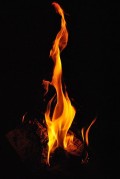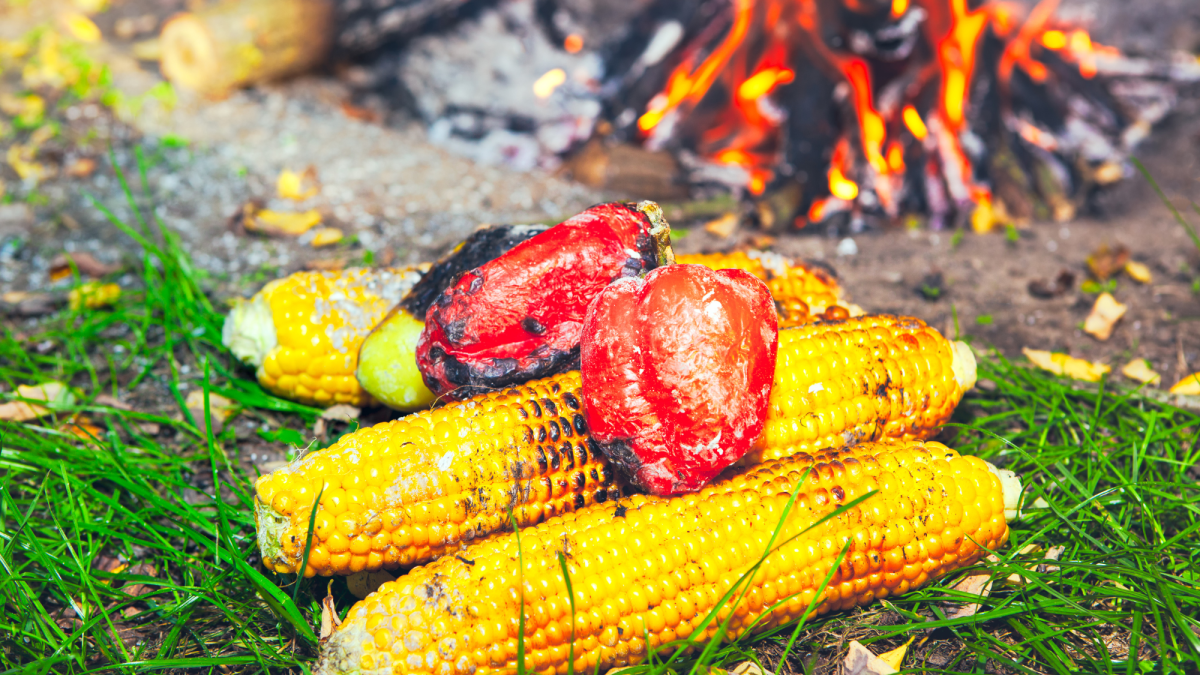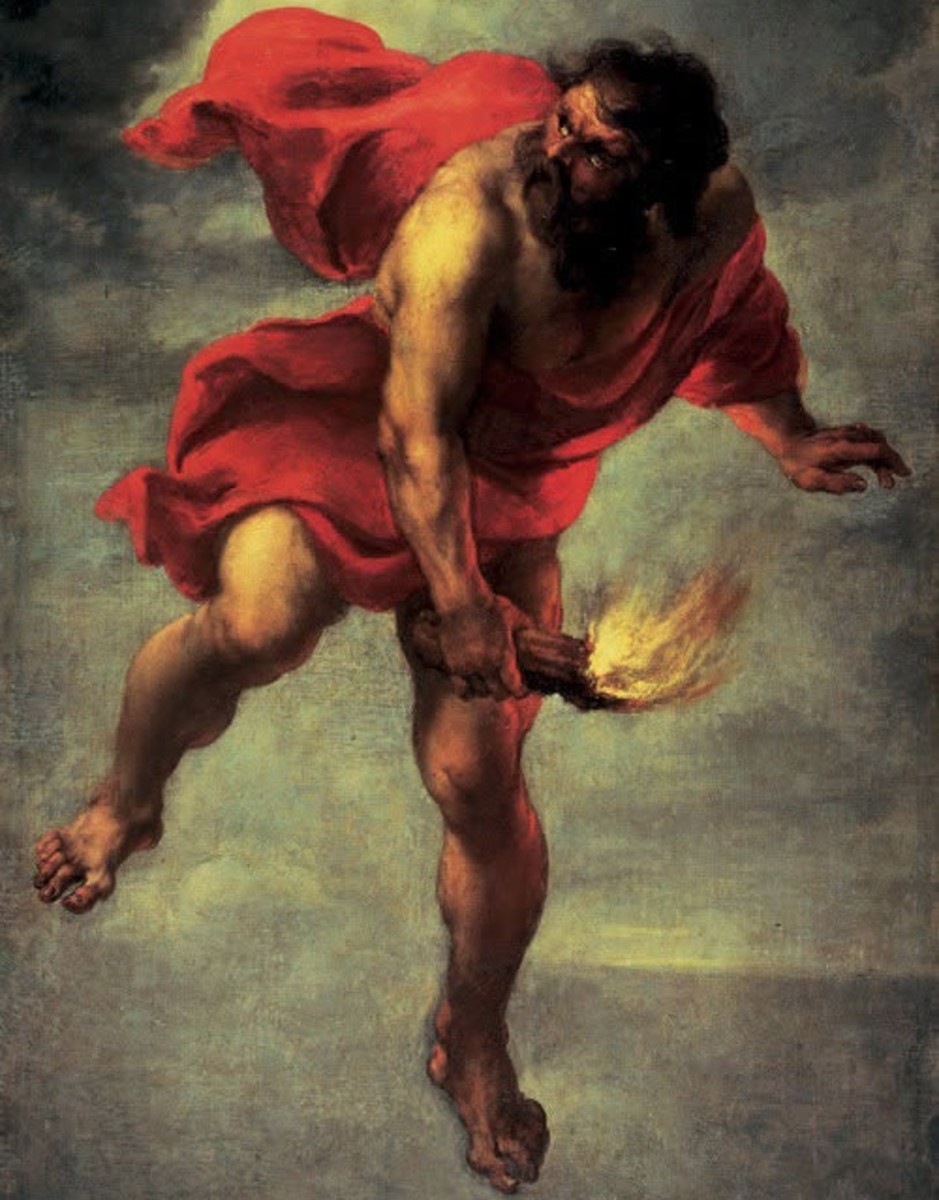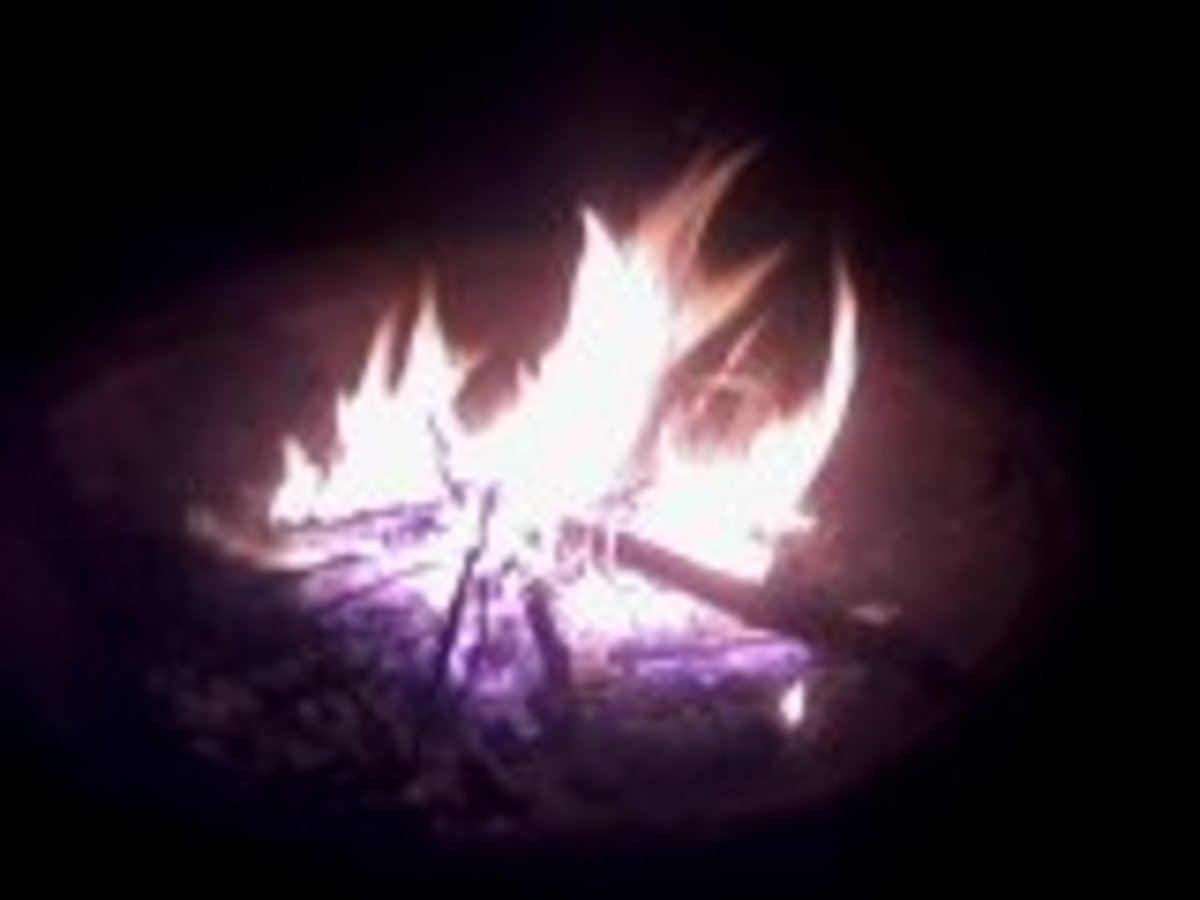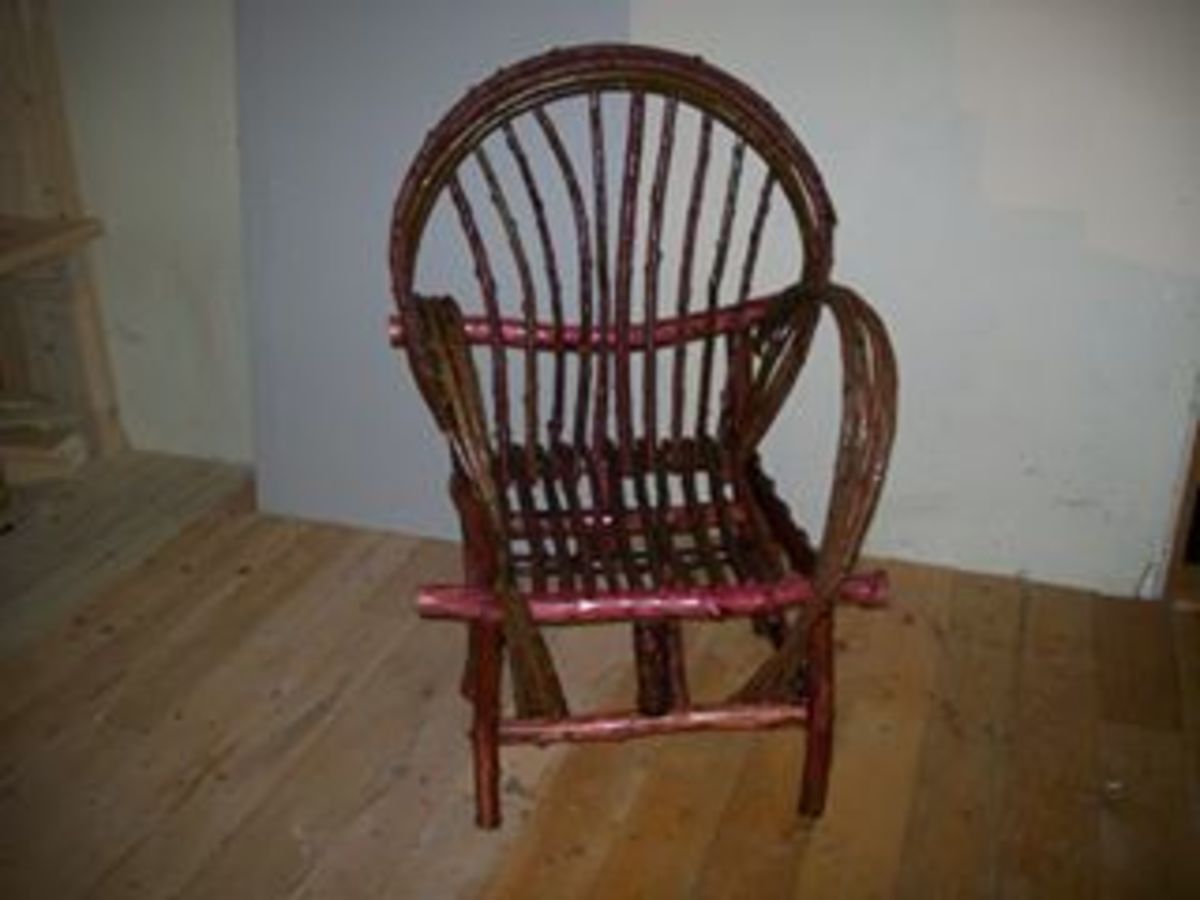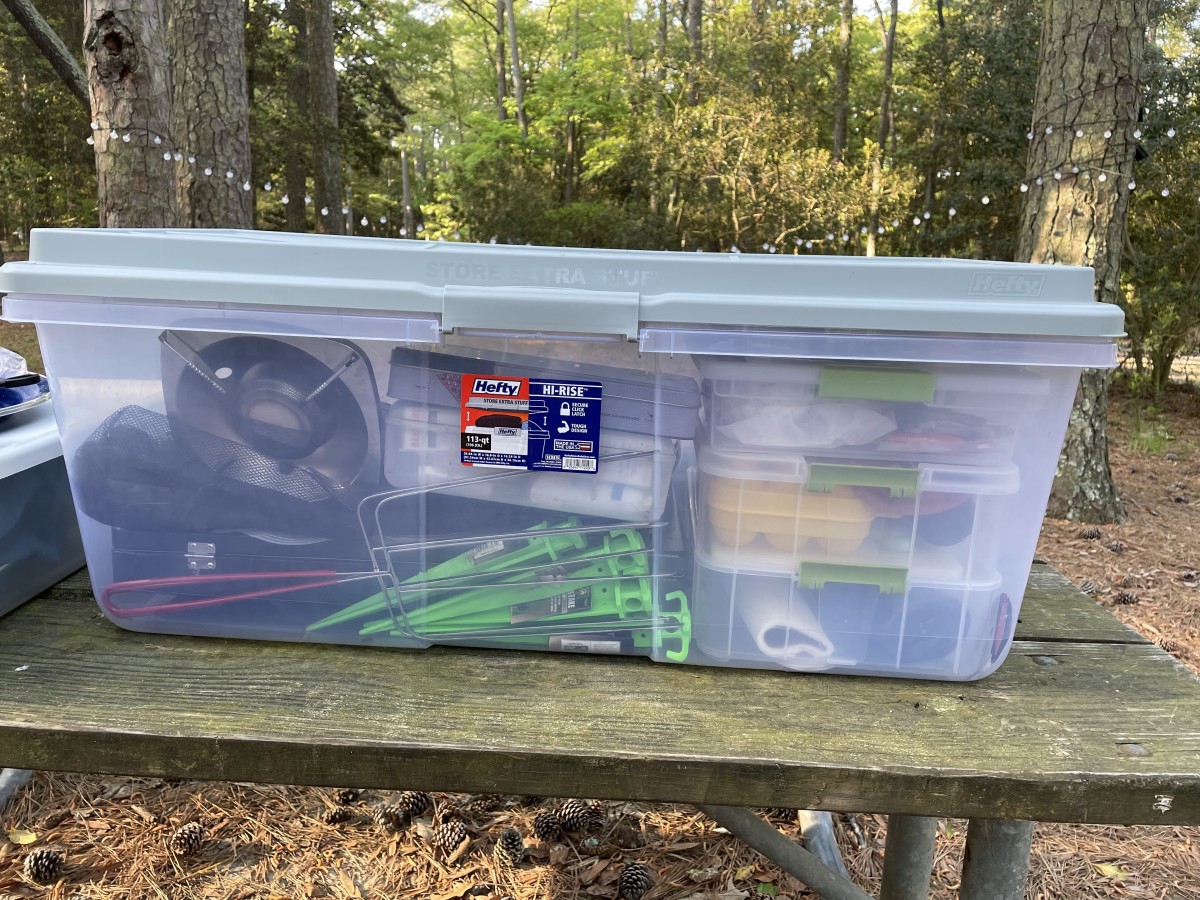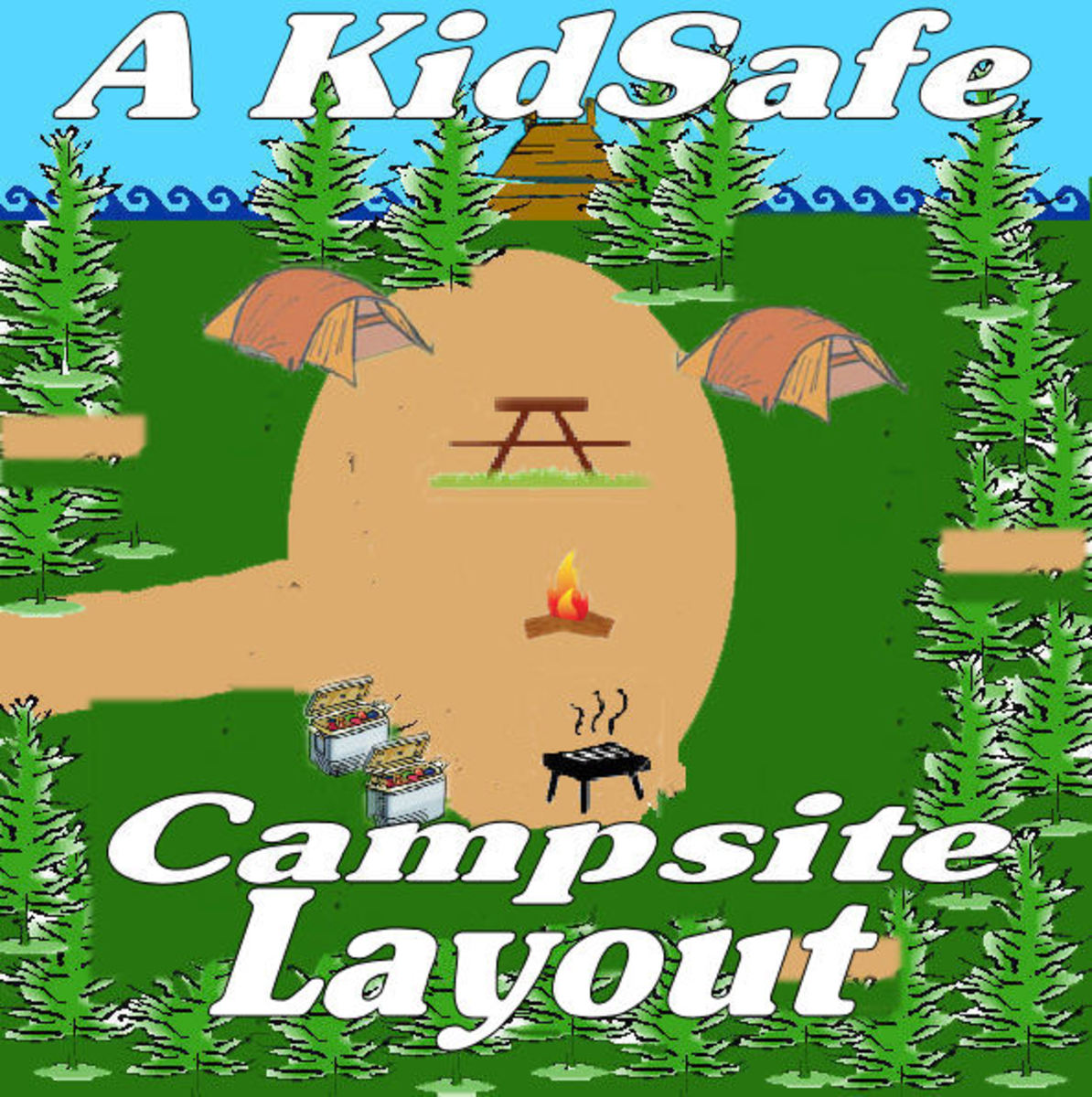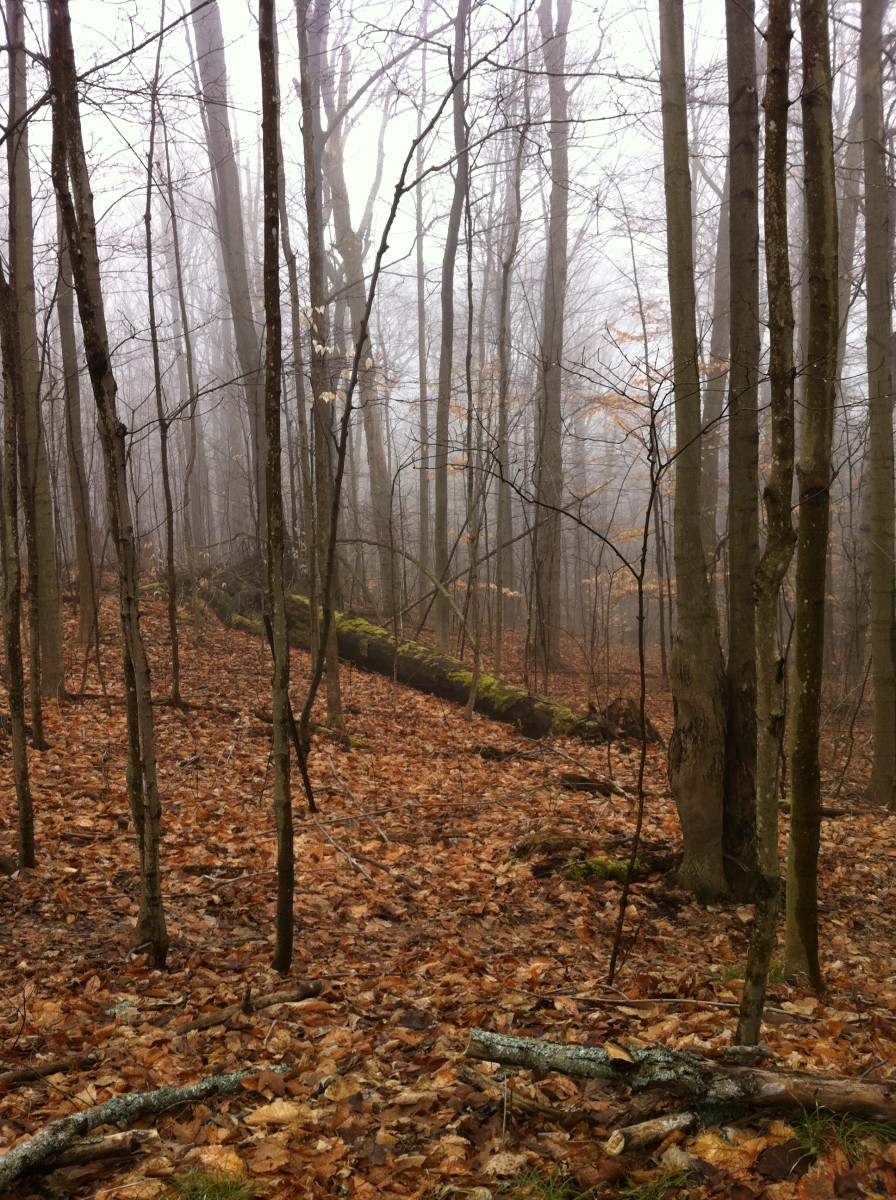Learn To Build a Campfire
To Build a Campfire - Or Not!
Very often, people have grown up without the need to start a fire. Perhaps, there wasn't a fireplace in their home. Perhaps, they had a gas-powered grill and didn't need to start a fire to barbecue. Perhaps, they lived in a city, where there weren't fire-building options. No matter the reason, they didn't learn to build a fire.
Then, one day, they decided to go camping and learned a frustrating lesson: It's not easy for the newbie to build a campfire, if they've never been shown how to do it. Maybe they didn't have any success in building one. I have started many a fire for newbie campers who saw me walk up to a fire pit, start a fire in about two minutes and came over to ask for my help.
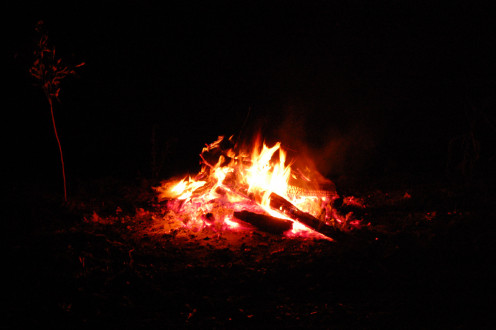
Ingredients for Building a Campfire
There are three main ingredients to a successful fire:
- heat
- fuel
- oxygen
Heat means reaching a hot temperature. This can happen quickly or slowly, depending on the source. Fuel can be anything combustible. Examples of fuel include barbecue coals, wood, paper (gas is not advised in building a campfire!), etc. Oxygen is essential to the fire and found in the air. However, the right combination of all three is what creates the fire to begin with.
To put out a fire, one of the ingredients must be eliminated. Water, being cold, extinguishes heat (and most of the oxygen). Certain powders can also eliminate oxygen. This is why fire extinguishers can contain foam that absorbs oxygen.
When preparing to build a campfire, campers must be prepared to put out a wayward fire, a fire too large, or just to put out the fire at bedtime - or when leaving camp in the morning for another activity. So, knowing how to put out the fire is just as important as knowing how to start the fire. Most people in camp use water (the safest means) to put out a campfire. However, knowing other strategies is helpful, in case you run out of water and the campfire starts running away from you!
Dry Wood Burns Fast!
If the firewood purchased for the campsite is very dry, four logs will only last about an hour. The type of wood changes the length of the fire. Some wood is quite dense and will burn longer. Other wood will burn quickly. Keep this in mind and buy more wood if the type of wood purchased is dry and will burn out quickly. If unsure, ask at the store selling the wood if the wood for sale is going to burn quickly or last a while.
Before Getting To Camp, Get The Wood!
But what kind of wood? Most campsites have a rule against chopping down branches off nearby trees or collecting downed wood (wood on the ground) so many people bring their own firewood. The best wood to bring is wood purchased at the campground store or at a store near the town the campground is located in.
Why not bring in wood from home, acquired for free from a friend's leftovers, or the back yard? The reason campers should not purchase firewood from areas far away from camp is that insects that inhabit or lay eggs in the wood from a camper's home may not be the same insects native to the area of the campground. This can introduce foreign insects that can take over native insect populations, decreasing the insect food source of native animals and, well, basically creating a domino-effect problem that shakes down the food chain. Part of the camping experience is to respect nature and bringing firewood that won't harm the environment shows respect for nature.
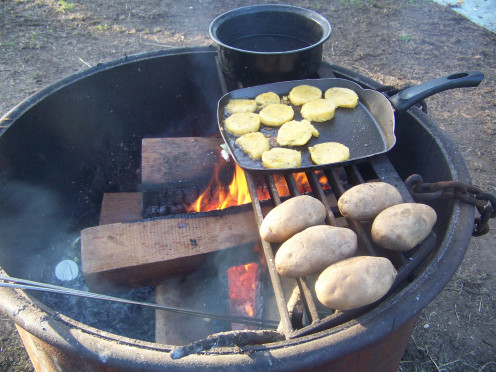
How To Build a Campfire
First, one needs to use a fire starter under the base of the fire. There are several different choices in fire starters. Here are some examples of fire starters, also known as kindling:
- crumpled up newspaper or scrap paper
- dry kindling wood
- straw
- fire starter blocks (sold in grocery stores)
- a fire log (this is only necessary if one is quite bad at starting fires)
All fire-starters are highly flammable and catch fire easily. However, without the right arrangement or construction between the kindling, tinder, and the long-lasting fuel source, the fire will die out.
When it comes to building a fire...
Type of Firewood Matters
Next, add the tinder - pieces of wood that are about the size of small branches. Some people add this after the fire starter gets going. Others build this around their fire starter or kindling before they even light the kindling. Examples of tinder include:
- thin twigs
- small pieces of precut wood
- pine cones
There are a few main arrangements for adding tinder to the kindling or fire-starter:
- tipi method (a triangular formation)
- criss-crossing the tinder
- log cabin (surround tinder with kindling)
- lean-to (one of the harder formations, this is useful for cooking and looks like a long piece driven into the ground with other pieces leaning on it)
The firewood arrangement allows the important third ingredient of oxygen to encircle the wood as it catches fire from the fire starter's heat. An important aspect of fire building is to add the firewood in increasingly larger sizes. Start by adding pieces of wood about the size of small tree branches to the fire starter/kindling. Then, add pieces a bit larger until having worked up to the size of logs. There are actually a couple more arrangements besides these listed but these seem to be the easiest for a novice.
Keep The Fire Small
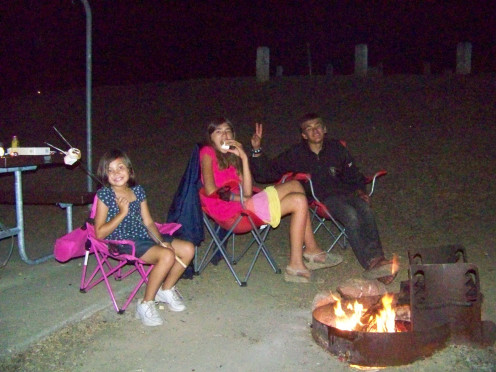
Reasons Campfires Go Out Before They Get Started
- firewood was stacked flat on the fire starter
- there wasn't enough fire starter to begin with
- fire starter or firewood wasn't dry enough (damp or wet wood is much harder to ignite)
- large firewood was added to the fire starter (use increasingly larger pieces of wood between the fire starter and the large pieces of firewood)
Kids and Fire, Adults and Fire
I don't recommend allowing a child to build fires unsupervised! I would extend this rule to adults who have never built fires, too!
I took someone backpacking (an adult male) who had never been camping and had never built a fire. This person scared the lights out of me with his fire building (under trees branches!) and walking away from the fire to "wash up" at the river - leaving the fire unattended! Let it be known... If anyone has no fire building experience, the first time they try to build a fire should be in the presence of someone else who has this skill. However, knowing that some adults still would try to do this without a knowledgeable friend around, I would add that newbie adults build their fire in a safe place (a designated campfire ring or barbecue), away from any foliage, away from furniture (like camp chairs, tents, or patio furniture), and away from things that might melt or burst (fuel for camp stove should be moved and no water wings lying around nearby) and with a ready bucket of water nearby - please!
*** An uncontrolled fire is a dangerous thing that can cause death and destruction. ***
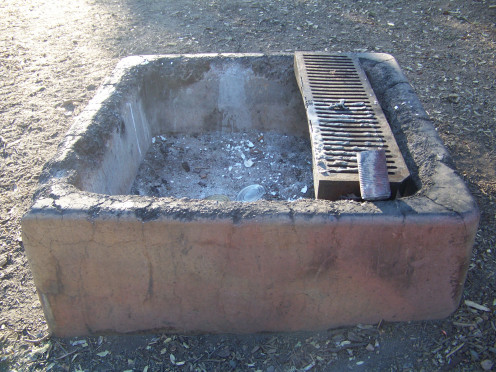
The Least You Need To Know About Campfires
- Establish the campfire in a safe place, away from flammables.
- Start with fire starter or kindling.
- Add tinder and build up the fire, keeping the size under control.
- Always, always, always put out the fire - cool to the touch - before leaving camp for good or going to bed for the night.
Last, but not least... Remember the lighter! It's hard to build a fire without a lighter, unless you plan to rub two sticks together!
Learn More About Camping
This content is accurate and true to the best of the author’s knowledge and is not meant to substitute for formal and individualized advice from a qualified professional.

